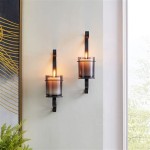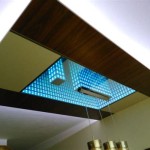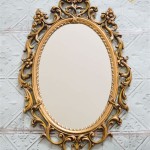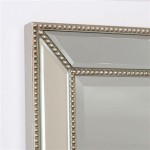What Adhesive to Glue Mirror Wall
A mirror wall is a stunning design element that can instantly transform a room, adding dimension, light, and a touch of modern elegance. However, adhering a large mirror sheet to a wall requires a specialized adhesive that can handle the weight and ensure a secure bond. Choosing the right adhesive is crucial for a successful and long-lasting installation. This article explores the different types of adhesives available and their suitability for gluing a mirror wall.
Types of Adhesives for Mirror Walls
When it comes to gluing a mirror wall, there are primarily two types of adhesives: contact adhesive and construction adhesive.
Contact Adhesive
Contact adhesive is a strong, solvent-based adhesive that provides a powerful bond. It's typically applied to both surfaces, allowed to dry for a short time, and then pressed together. Contact adhesives are known for their high shear strength, making them ideal for applications where the bonded surfaces will experience a lot of movement or pressure. However, they can be difficult to work with, requiring careful application and precise timing. They also emit strong fumes, making it essential to work in a well-ventilated area.
Construction Adhesive
Construction adhesive is a versatile, multi-purpose adhesive that offers good adhesion to a wide range of materials, including wood, metal, and glass. It comes in both solvent-based and water-based formulations. While construction adhesives may not offer the same shear strength as contact adhesives, they are easier to work with and provide a secure bond for mirror installations. Water-based construction adhesives are low-VOC and emit fewer fumes, making them a better choice for indoor projects.
Factors to Consider When Choosing Adhesive
The best adhesive for a mirror wall will depend on several factors, including:
1. Weight of the Mirror
The weight of the mirror is a primary factor in determining the strength of the adhesive required. Heavier mirrors will need a stronger adhesive, such as a high-strength contact adhesive, while lighter mirrors can be secured with a construction adhesive. It's always better to err on the side of caution and choose an adhesive that is strong enough for the weight of the mirror.
2. Surface Type
The type of wall surface will also influence the choice of adhesive. Contact adhesives work best on smooth, non-porous surfaces like glass, metal, and painted walls. Construction adhesives offer better adhesion to porous surfaces such as drywall, concrete, and brick. For uneven or textured surfaces, opting for a construction adhesive with added flexibility is advisable.
3. Environmental Factors
The environment where the mirror is installed should also be considered. For high-humidity areas like bathrooms, a moisture-resistant adhesive is essential. Similarly, if the mirror is exposed to direct sunlight or extreme temperatures, a UV-resistant adhesive should be used.
4. Ease of Application
The ease of application should also be a consideration. Contact adhesives can be difficult to work with and require precise timing, while construction adhesives are generally easier to apply. If you are not experienced with adhesives, opting for a user-friendly construction adhesive is recommended.
Tips for Gluing a Mirror Wall
Once you've chosen the appropriate adhesive, follow these tips for a successful installation:
- Thoroughly clean and prepare the wall surface by removing any dust, dirt, or debris.
- Apply the adhesive evenly to both the wall and the back of the mirror.
- Allow the adhesive to dry for the recommended time before pressing the mirror in place.
- Use a level to ensure the mirror is straight and secure.
- Apply a bead of caulk around the perimeter of the mirror to prevent moisture from penetrating the adhesive.
- Support the mirror while the adhesive dries.
- Avoid applying too much pressure to the mirror as it can cause the adhesive to give way.
- Always follow the manufacturer's instructions for the specific adhesive you are using.
By carefully considering the factors mentioned above and following the tips for application, you can ensure a successful and long-lasting mirror wall installation.

Evo Stik Light Grey Mirror Adhesive 290ml Diy At B Q
What Is The Best To Use Glue Mirrors A Wall Quora

How To Use Mirror Adhesive Silicone

Mirror Silicone Sealant Diy Bostik

Mirror Fix Sil 300ml Silicone Adhesive And Sealant For Mirrors Factory

Frameless Bathroom Mirror Wall Hanging Crl Adhesive Glue 310 Ml Cartridge Tube

Mirror Glue Adhere A To Wall By Dulles Glass Com

Putting Your Mirror Up With Adhesive April 2024 Our 5 Picks For The Best Adhesives

How To Hang A Mirror With No Slip Adhesive

Mirror Mastic Finotech Ultra Bond Adhesive Glue Ultrabond Mount Glass Lazada Ph








